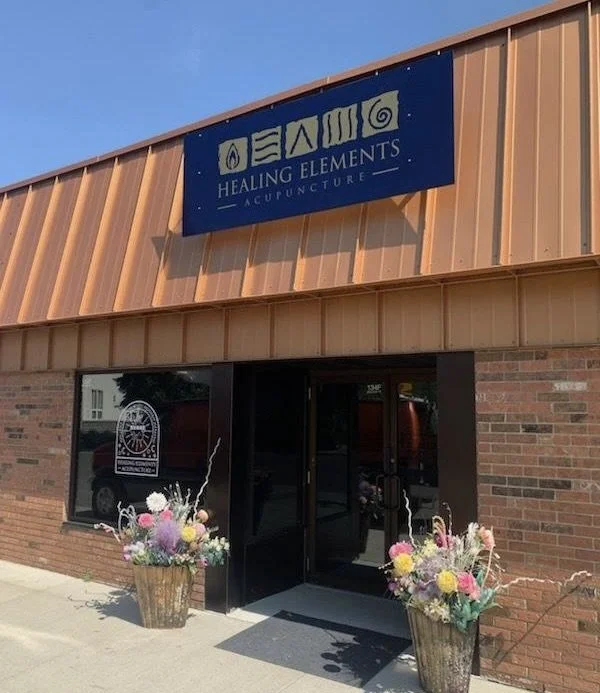
Healing as Ancient as the Elements
Dr. Jared McCollum, Dr.Ac.
Jared M. McCollum, Dr.Ac., is passionate about guiding people on their path to health and wellness and helping them discover the amazing healing ability they all hold within themselves. Having graduated from the Canadian College of Acupuncture and Oriental Medicine in 2004, Dr. McCollum has extensive training in Acupuncture, Oriental Diet Therapy, Traditional Chinese Herbal Medicine, Meditation and Taoist Psychology and Psychotherapy. Jared has spent countless hours serving the communities he has lived in over the last 20 years, offering classes in meditation, Qi Gong and programs he has developed which identify emotional blocks and help others let go of extreme emotions and stress. He is committed to improving the health of his patients as well as their community.

Your first acupuncture appointment will usually last about 60+ minutes. We begin with an in-depth conversation about your health concerns, past health history, lifestyle, goals for treatment, and any questions you may have about Chinese medicine and the treatment process. This conversation is an important part of the diagnostic process, and allows Jared to get to know you and understand how best to address your health concerns.
Frequently Asked Questions
-
Chinese medicine is a complete health care tradition that dates back 3,000 years yet remains effective today. It is a means of strengthening the body, which can be weakened by modern-day stress and environmental hazards. Rather than treating symptoms as western medicine does, Chinese medicine focuses on strengthening your own vital energy called Qi (pronounced chee) so that your body can heal itself.
Although traditional Chinese medicine uses many approaches, including diet, exercise, and massage, its cornerstones are acupuncture and herbal medicine. Herbs provide the internal treatment for strengthening the body, while acupuncture is Chinese medicine’s most frequently used external treatment. Two associated treatments are moxibustion and cupping, both used to improve circulation.
-
In Western Medical physiology, the smallest unit of life is the cell. In Chinese medical physiology, the smallest unit of life is Qi. Qi is usually translated into English as energy or life force. All things are made up of Qi. For example, it may be helpful to think of Qi as the electromagnetic bond that holds atoms together. Even a solid wood desk is made up of innumerable atoms held together by this energetic bond. The same is true in the body. Your organs, bones, muscles, blood are all made up of atoms held together with this electromagnetic force, Qi.
All material things project this electromagnetic field which is easily seen when you hold two polar magnets close to each other or watch a needle in a compass point North. In the body, Qi follows pathways we call meridians. Traditional Chinese Medicine is based upon the observation and manipulation of Qi in the meridians. When the meridians become congested, illness results. When harmony and smooth flow is returned, health results.
Feng Shui is becoming popular in the West. It is based on obtaining harmonious Qi flow in the external environment. Chinese medicine is based on obtaining harmonious Qi flow in the internal environment.
Qi is sometimes written as Chi in older sources. ‘Chi’ is a translation from an older system of Romanization of the Chinese system called the Wade-Giles system. The current Romanization system used in China called the Pin Yin system uses ‘Qi’ for the translation.
-
Since people are so unique, treatments can take many different courses. Acute conditions that are short in duration may only require 2-3 treatments to have a curative effect. Chronic conditions that are years in duration take longer to resolve. A rule of thumb that one of my teachers used to say was for every year a person has had a problem, you need a month of weekly treatment. That doesn’t mean that you won’t have any benefit from a couple of treatments, it just means that it takes some more time to correct the underlying cause of the problem. For example, if someone came in to have his or her low back pain treated that they had for 10 years, pain relief could be obtained within a few treatments. If that patient then stopped treatment since they felt better, the pain may come back. If the patient continued treatment to correct the underlying weakness that caused the pain to manifest in the first place, the pain may never return.
-
Acupuncture needles are hair-thin, metallic, and solid. People experience acupuncture differently, but most feel no or minimal pain as the needles are inserted. Some people are energized by treatment, while others feel relaxed. Improper needle placement, movement of the patient, or a defect in the needle can cause soreness and pain during treatment. This is why it is important to seek treatment from a qualified acupuncture practitioner.
The needles can be quickly adjusted in the unlikely event that you feeling uncomfortable during the needling process. Please tell us if you feel uncomfortable.
Some people experience a sensation like that of a mosquito bite that disappears very quickly. Often people describe their sensations as warming, heavy, numb or tingling. Be comfortable and relax while the needles are in place. The more you can relax during an acupuncture treatment, the better the results. Some people even fall asleep during the treatment.
Following the treatment it is very common for you to feel a tremendous sense of relaxation and calm.
-
According to the NIH Consensus Statement on Acupuncture, there have been many studies on acupuncture’s potential usefulness, but results have been mixed because of complexities with study design and size, as well as difficulties with choosing and using placebos or sham acupuncture. However, promising results have emerged, showing efficacy of acupuncture, for example, in adult postoperative and chemotherapy nausea and vomiting and in postoperative dental pain. There are other situations–such as addiction, stroke rehabilitation, headache, menstrual cramps, tennis elbow, fibromyalgia, myofascial pain, osteoarthritis, low-back pain, carpal tunnel syndrome, and asthma–in which acupuncture may be useful as an adjunct treatment or an acceptable alternative or be included in a comprehensive management program. A recent study showed that acupuncture provides pain relief, improves function for people with osteoarthritis of the knee, and serves as an effective complement to standard care. Further research is likely to uncover additional areas where acupuncture interventions will be useful. WHO reports over 20 conditions that are benefited by acupuncture treatment.
The Acugraph
Ancient wisdom meets cutting-edge technology
To modernize Acupuncture Dr. McCollum uses Acugraph Digital Meridian Imaging. This system is a computerized tool used to analyze and document the energetic status of the acupuncture meridians.
Dr. McCollum uses the system in a short examination by touching a moistened probe to acupuncture points on your hands and feet. The Acugraph allows Dr. McCollum to measure and analyze the energy level of each acupuncture meridian.
Armed with this information he can make better-informed decisions about your condition, and provide the best treatment possible. Each new patient receives a comprehensive 8 page report outlining their current state of health and the treatment plan to correct your imbalance.



